By Alessandra Ressa
Among the many bizarre places in Trieste, the abandoned artificial gallery of Aurisina’s aqueduct, known as Acquedotto Randaccio, is definitely the spookiest.
It runs underground for about 800 meters and offers the perfect set for a horror film. A narrow, long, straight pitch black tunnel, old bicycles, dark caves and passages opening left and right. Insects of every size and color, spine-chilling graffiti, a disquieting echo of your own steps and breathing expanding and literally hitting you from behind when you least expect it. There’s even a mysterious laboratory in disuse right in the middle of the tunnel. If you are brave enough to walk through it, you are in for quite a hair-raising treat.
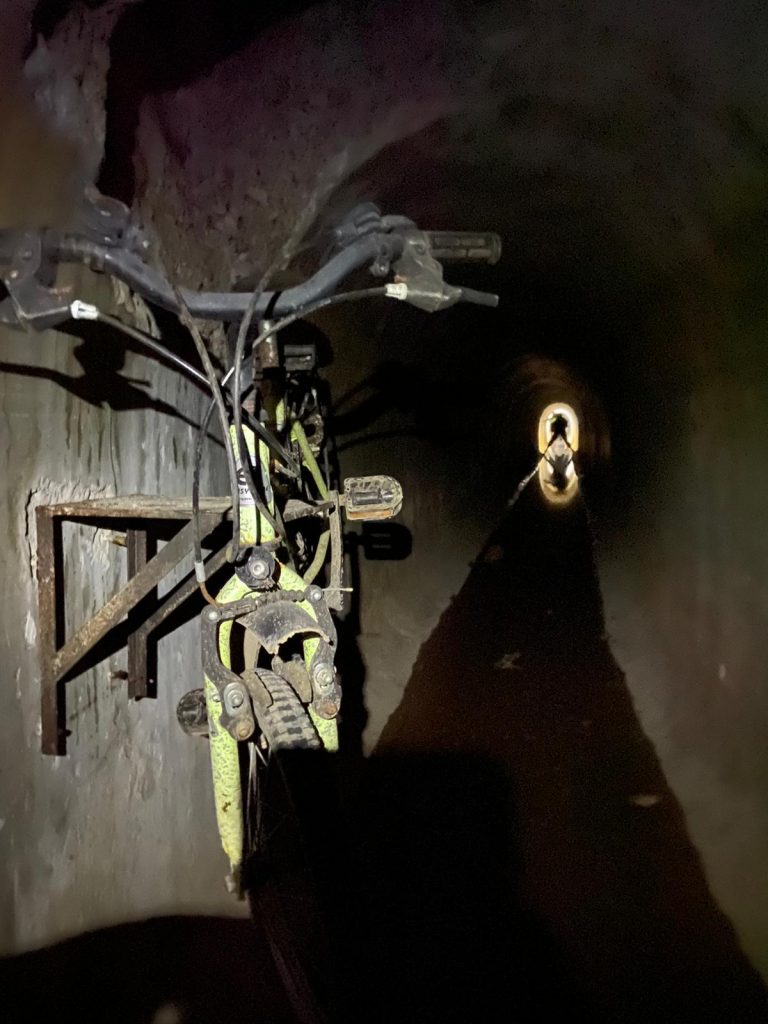
Built at the beginning of last century (between 1920 and 1921, according to municipal sources), the giant tube was supposed to implement Aurisina’s aqueduct. It was one of the major, most difficult and very expensive public works in Trieste launched in 1855 to bring water to the Carso villages, Santa Croce and Prosecco in particular, which greatly suffered from droughts and chronic lack of drinking water. The wells and other scarce water sources of the area were contaminated by the abundant manure deposits of the area, making the water dangerous to drink and contributing to the spread of diseases.
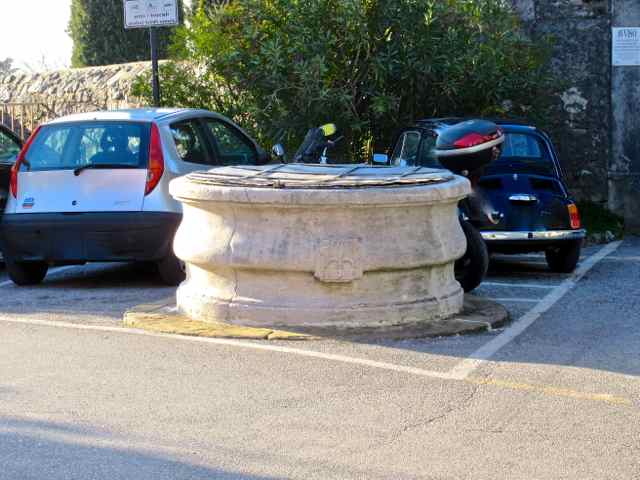
Furthermore, the ambitious piping project was intended to carry the water from Aurisina’s springs all the way to Trieste, where the population was quickly growing due to the fast developing railway and the prosperity of the port. The Theresian aqueduct didn’t reach many areas of town, where people were still using public fountains, wells and underground tanks which often turned dry.
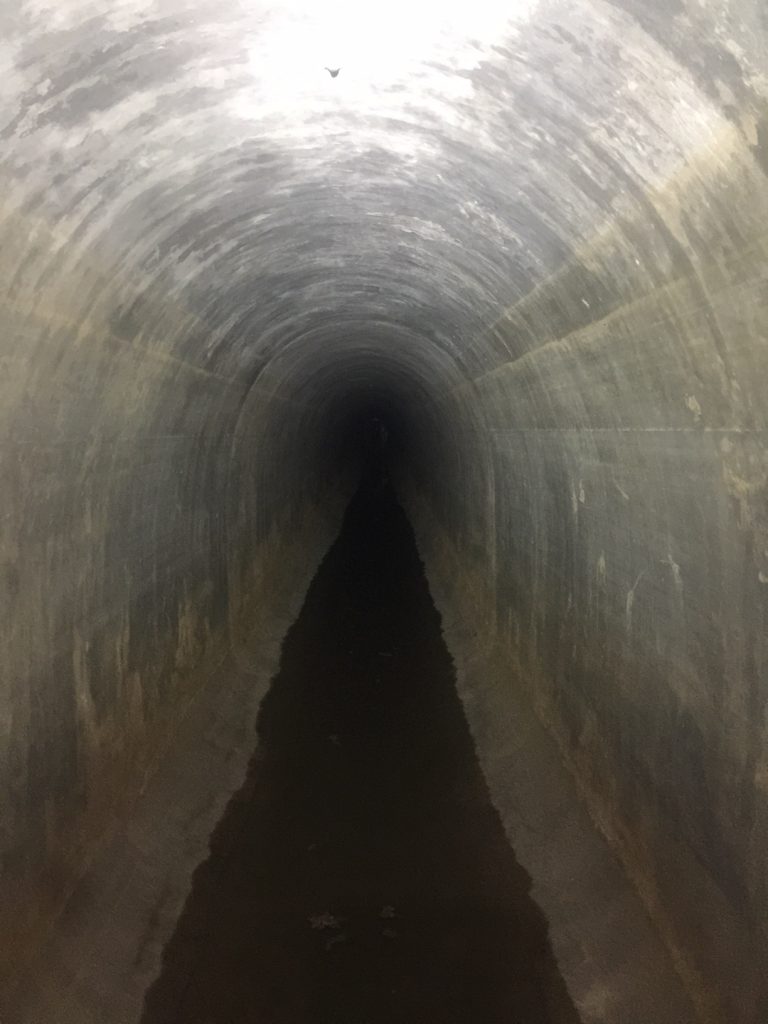
The giant pipeline was to be connected to the nearby water tower, Torre Liburnia, now in disuse and closed to the public but definitely worth a visit. The tower was built in 1854 and its function was to maintain continuous piping pressure which from the Aurisina springs reached the nearby railway station. At that time the hilly Carso area between Aurisina and Santa Croce was completely bare of vegetation, and the medieval style tower must have been quite a sight.

The building of the Aurisina artificial gallery to be later connected to Liburnia Tower however appears to have never been finished. The project was too vast and expensive, the giant pipe was soon abandoned underground and forgotten for decades.
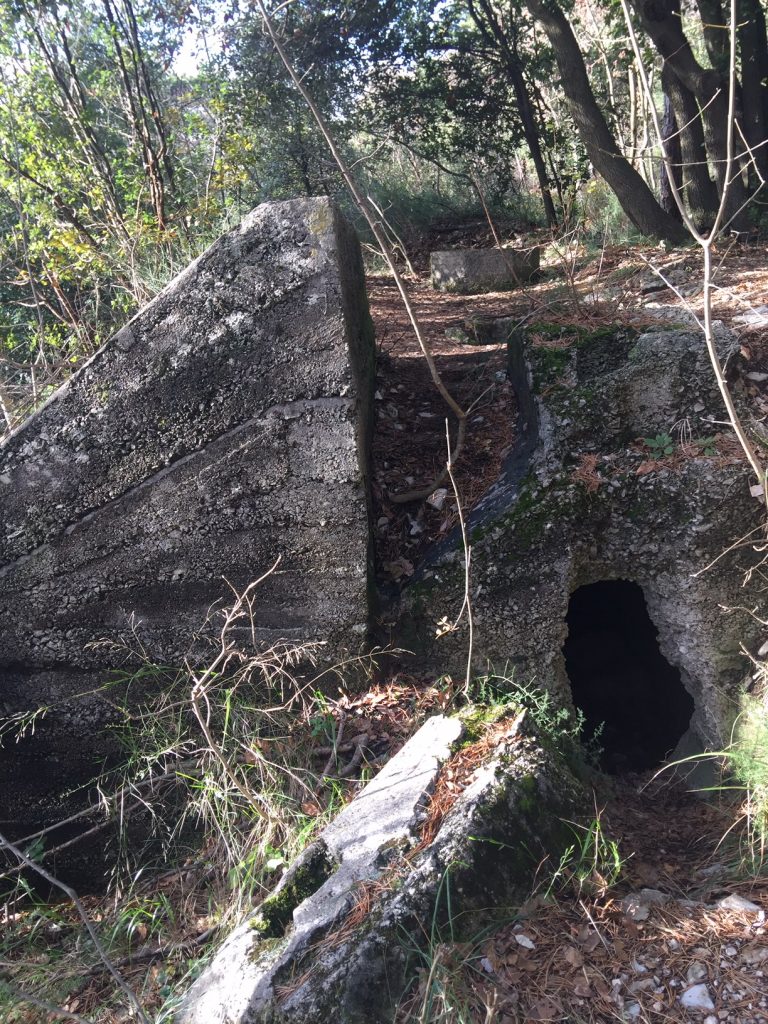
The main entrance is easy to find during winter as there is very little vegetation around. From the outside it looks like a WWII bunker, with a concrete sturdy trapezoidal wall and a couple of chimneys popping out of the ground. Look closer and you will see two entrances – one horizontal to the side and one vertical from the ceiling. Make sure you take the first entrance to the side.

To visit the gallery in all safety (always be aware of cracks and falling rocks), make sure you don’t go alone, or that someone knows where you are as your mobile phone won’t work inside. You’ll need water resistant shoes (rain boots if you visit after heavy rains), a helmet (the gallery reaches 1,80 meters in height but there are some passages where you will literally have to crawl on your belly), a good flashlight (avoid relying on your phone and it’s a good idea to always keep your hands free when exploring caves and tunnels, so a headlamp is your best choice), and clothes that you don’t mind soiling with dirt.

The best way to reach the place is by parking your car in Aurisina near the Slovenian Ivo Gruden middle school’s parking lot (it’s public) and taking trail 1 to Santa Croce. Bus 44 will also take you there from Piazza Oberdan but you have to make sure the driver knows where to let you off (first stop on the main road after Aurisina village, go across the road towards the recycling center and follow the white-red trail 1 signs on poles, and pass the bright blue house). Once on trail 1 you will find the gallery just a few meters off the path on your right.
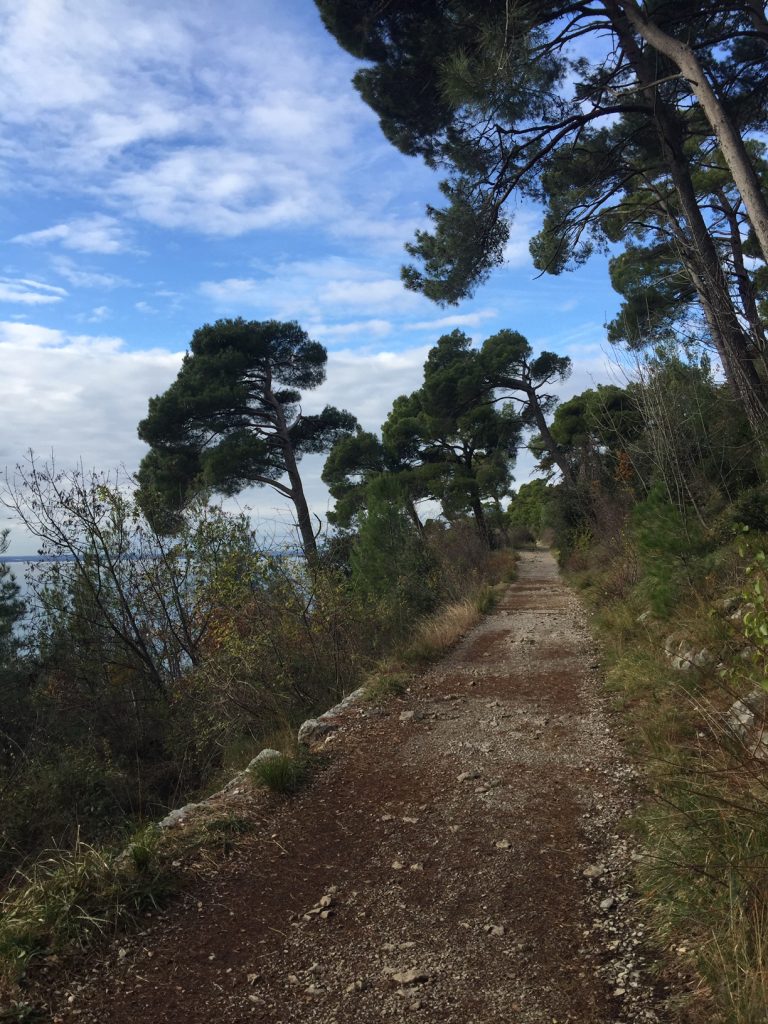
Inside the tunnel many wide lateral rooms and galleries have been excavated probably at the time of construction. If you climb the lateral mounds of earth and rocks you will see more low passages (not safe to explore). Two passages are connected to two major natural caves, Grotta sopra le Sorgenti di Aurisina (Cave above Aurisina’s Springs) also known as Grotta di Mago Merlino (Wizard Merlin’s Cave), and Grotta della Galleria Acquedotto Randaccio.
As the passages haven’t been mapped out, and the 100-years old documentation of construction is not available, it is difficult to understand where the natural caves meet the tunnel. There may also be unexpectedly dangerous drops if you move away from the main gallery. Halfway through there is a large air shaft with a long pipe running up and down.
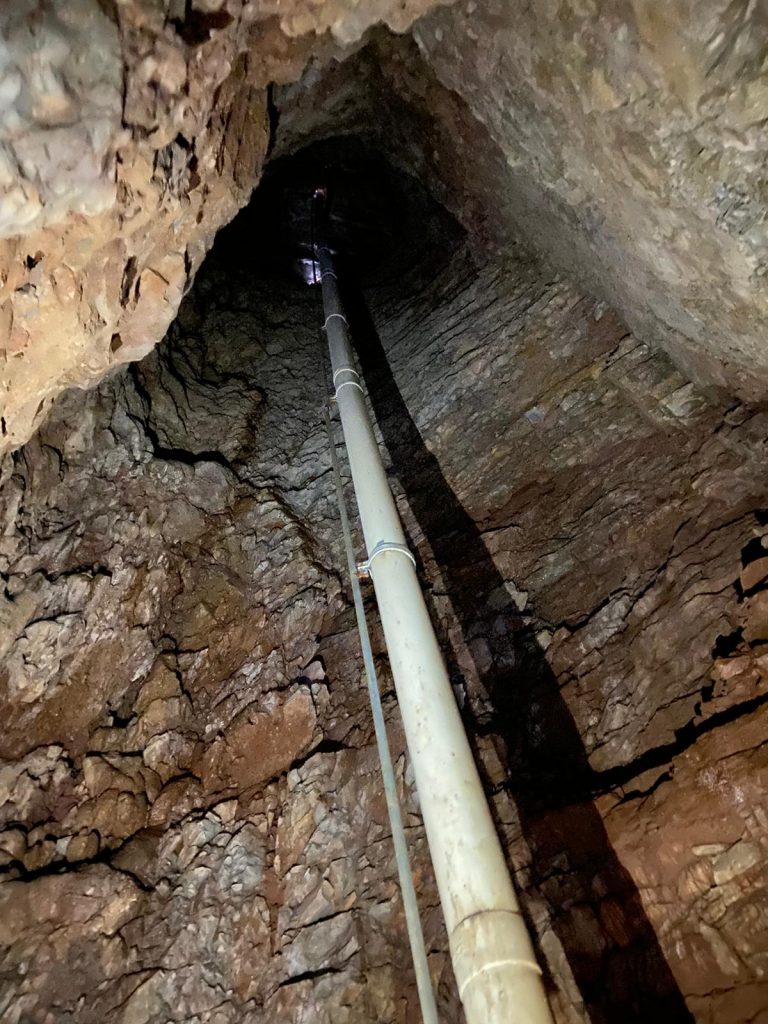
If all of the above haven’t spooked you out enough, here comes the best part. An abandoned secret underground laboratory. Judging from the furniture, appliances and materials left behind it dates back to the early 1980s.
There are several excavated artificial rooms, some plastic sheets used as walls to separate them, old electricity meters, a sort of heating system, monitors and other unidentifiable abandoned objects (turbines, pipes, pieces of electronic devices) that really make your imagination spin. There are even some sort of rudimentary bunks in one of the rooms. Did somebody actually sleep here 40 years ago? Was this a Cold War secret laboratory? What were they doing here?
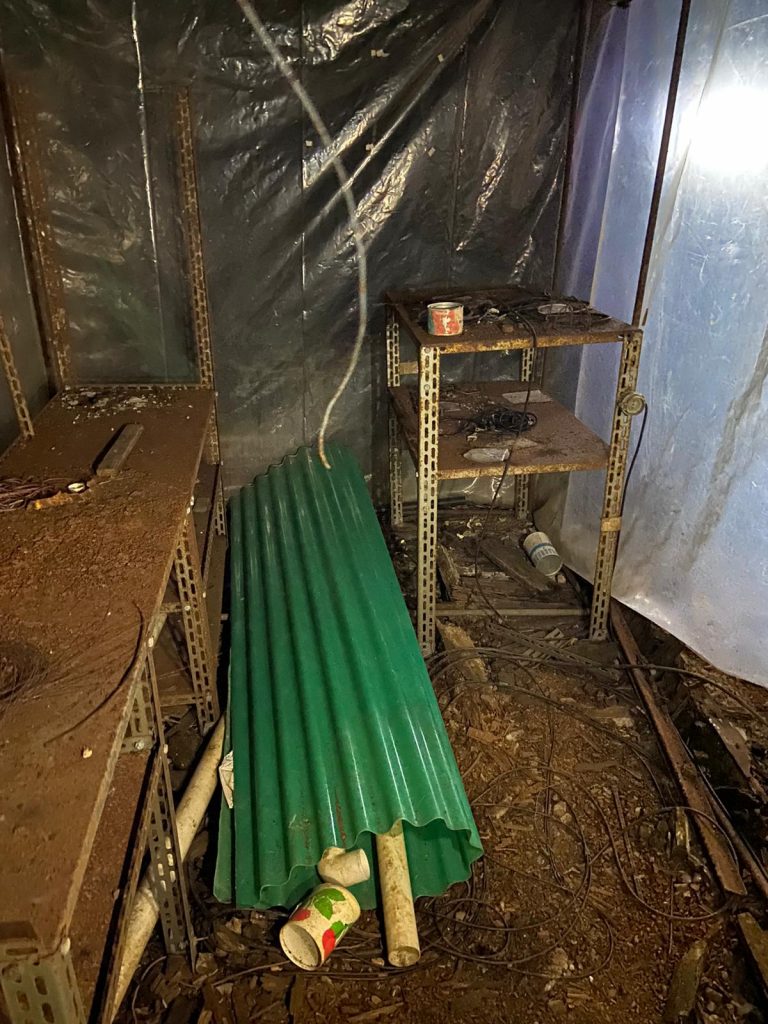
Although nobody really knows for sure what this laboratory was for, the most plausible explanation is that it was built in the 1970s by a well-known Professor Antonio Marussi, a Trieste geodesist who became famous worldwide for introducing the technique of non-Euclidean geometry into geodesy.
He was very popular among geophysicists for his pioneering investigations thanks to his acute and attentive observation of the natural environment and of his beloved Karstic Plateau. He dedicated a notable part of his scientific speculation to it, formulating for example, with a rare capacity of intuition concerning the synthesis of geophysical and geomorphological evidences, an innovative theory on the hydrogeological phenomena connected with the Karst phenomenon.

The laboratory was probably used as a safe environment to conduct different experiments to detect micro movements of the Earth in relation to the Moon and the tides. A laser is said to have been used for this purpose which could exploit the straight shape of the gallery. The “chimneys” positioned outside are believed to have held special photographic equipment to capture the night sky and compare it to other similar activities in different parts of the world to determine geophysical movements. Unfortunately, no material evidence has been found about this laboratory’s activities, and the information comes from the combined memories of Trieste scientists.
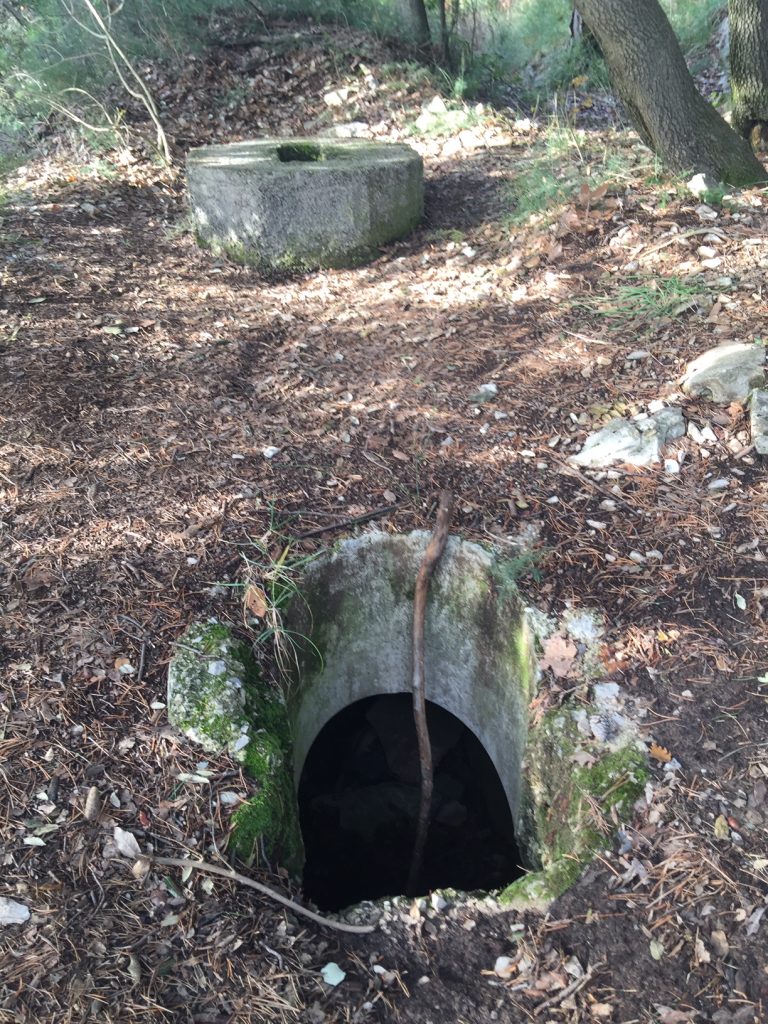
Once you pass the abandoned laboratory, you will begin to see a dim light in the distance. This is literally the approaching end of the tunnel. The gallery opens into a wide room full of creepy graffiti. If the big metal door is open (it was ajar last time I visited, it was locked the previous time) climb the metal stairs and exit. You’ll have to crawl under rusted barbed wire and climb a high gate to exit the area. If the metal door is locked or you don’t feel like climbing the gate, go back the way you came. You will see the gallery from a different perspective.
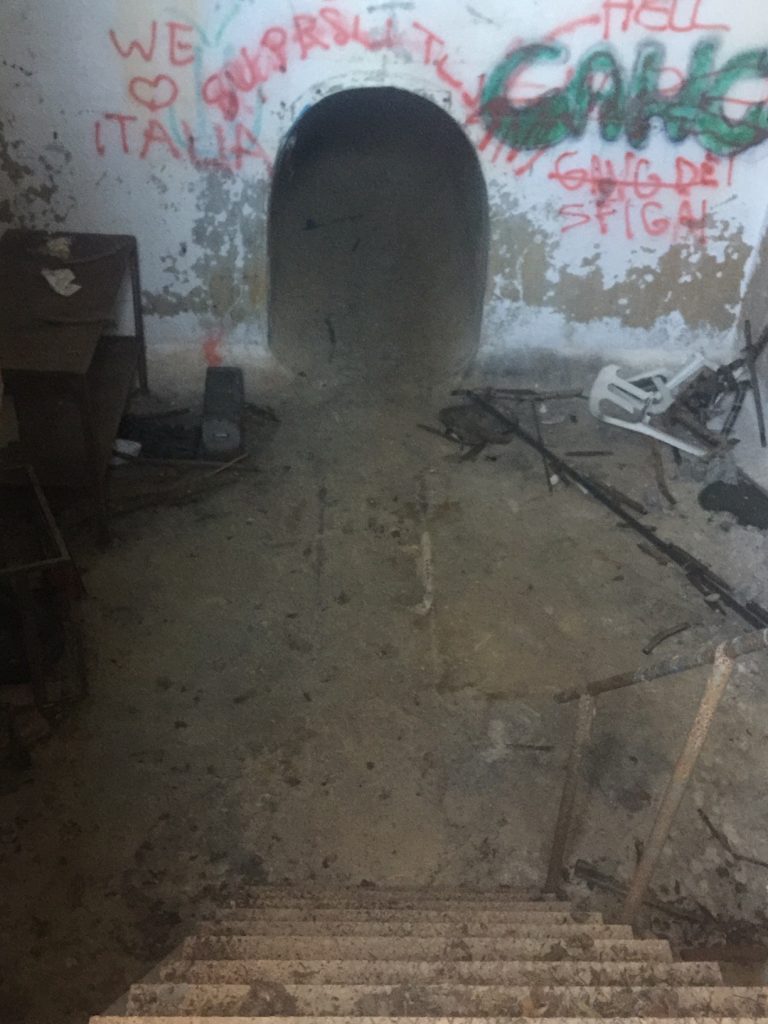
Notwithstanding the thrilling adventure of the underground gallery, this is one of the most suggestive areas of Carso so you should take some time to explore the trails outdoors. Going back towards Aurisina, you shouldn’t miss the continuation of trail 1 all the way to the newer water tower (Torre Piezometrica dell’Acquedotto Randaccio), built in 1929, from where you can enjoy breathtaking views of the coast.
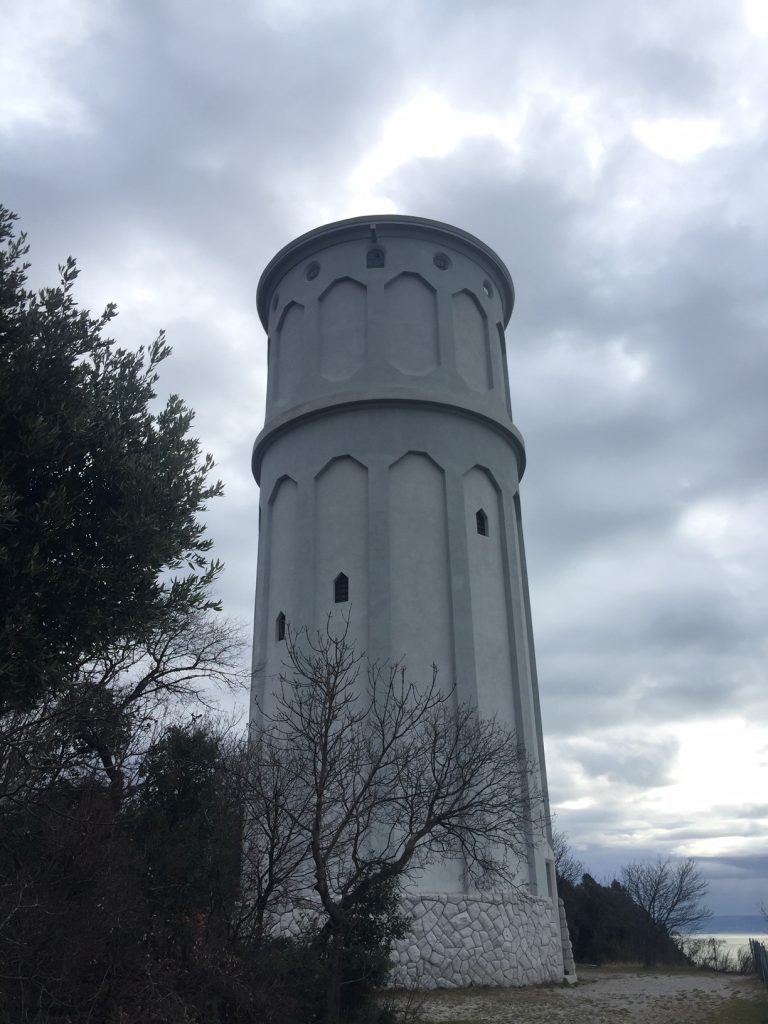
Once there, take the trail to the left following the cliff back to Santa Croce and enjoy the beautiful rocky landscape covered in wild sage along the Sentiero della Salvia. Follow it to vedetta Tiziana Weiss and back to trail 1 all the way to Prosecco and Contovello.
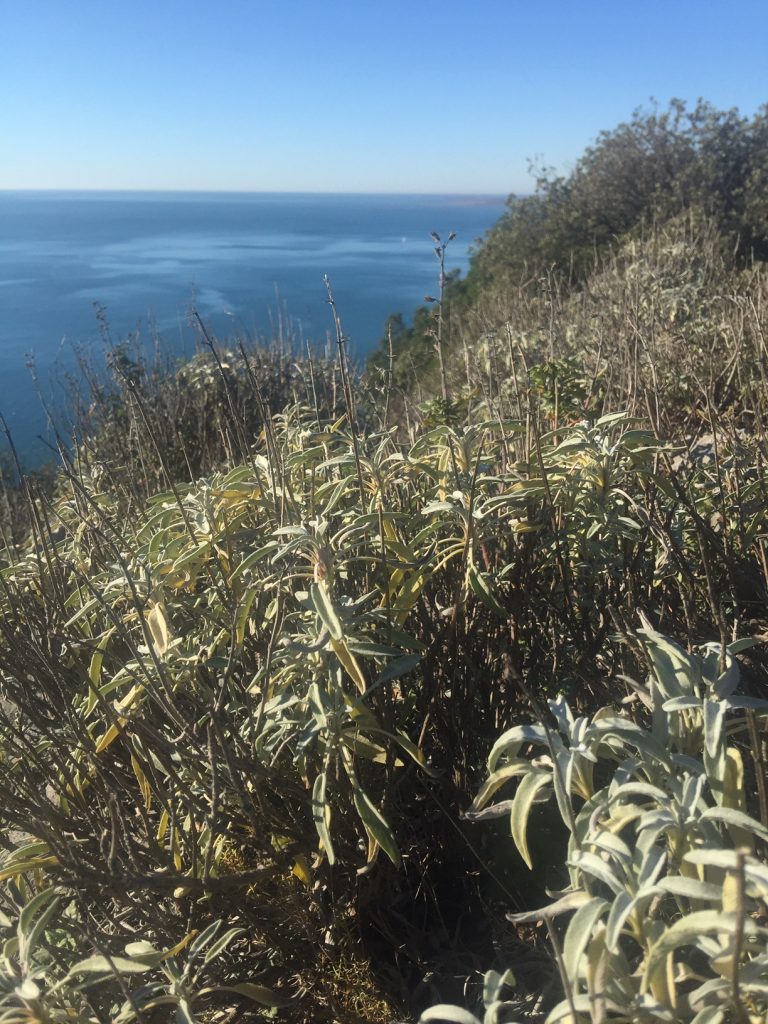
If you want to try another very panoramic trail that will lead down to Strada Costiera and eventually to the sea and the wild free beach of Canovelle, try steep Sentiero dei Pescatori. The maps of these more popular trails are available online. Avoid Sundays to better enjoy the silence and the wind as these easy walks are quite popular among Triestini.

























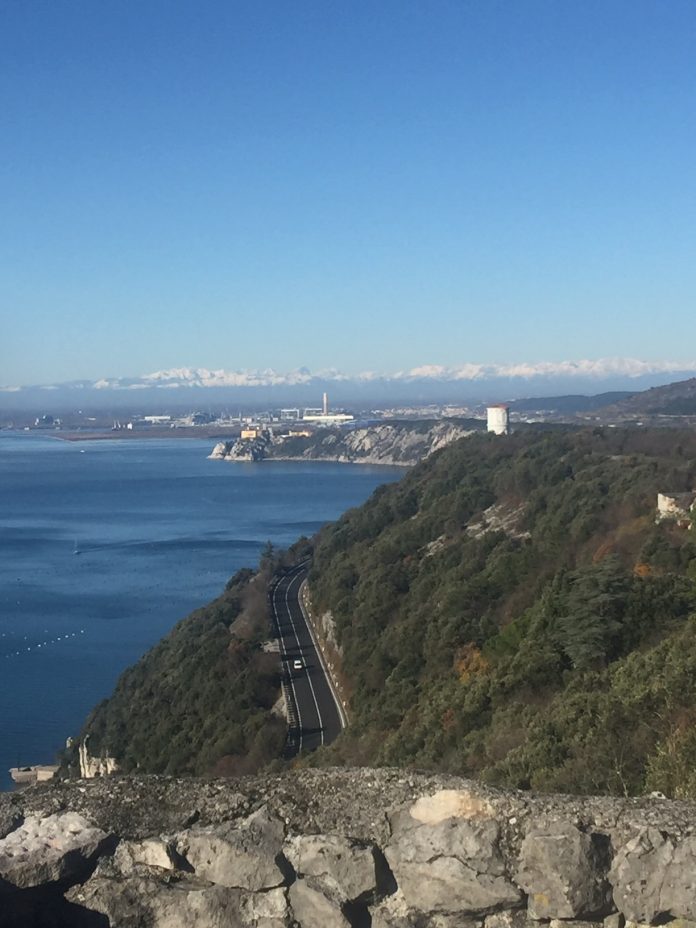




No mistery and no secrets at all: the experiments were done and published by prof. Marussi and prof. Manzoni, and all the results were published.
The camera for stars triangulation was set not in the “chimneys”, but outside of the gallery, at the entry in Aurisina.
In the tunnel were set various instruments: the most relevant was a huge laser extensometer, used to measure land tide.
thank you for the detailed explanation. Unfortunately at the time of writing no information was made available by the university of Trieste on the subject (in fact there was no reply to my emails at all) and no publications appear to be available on the web. so the more precious your contribution